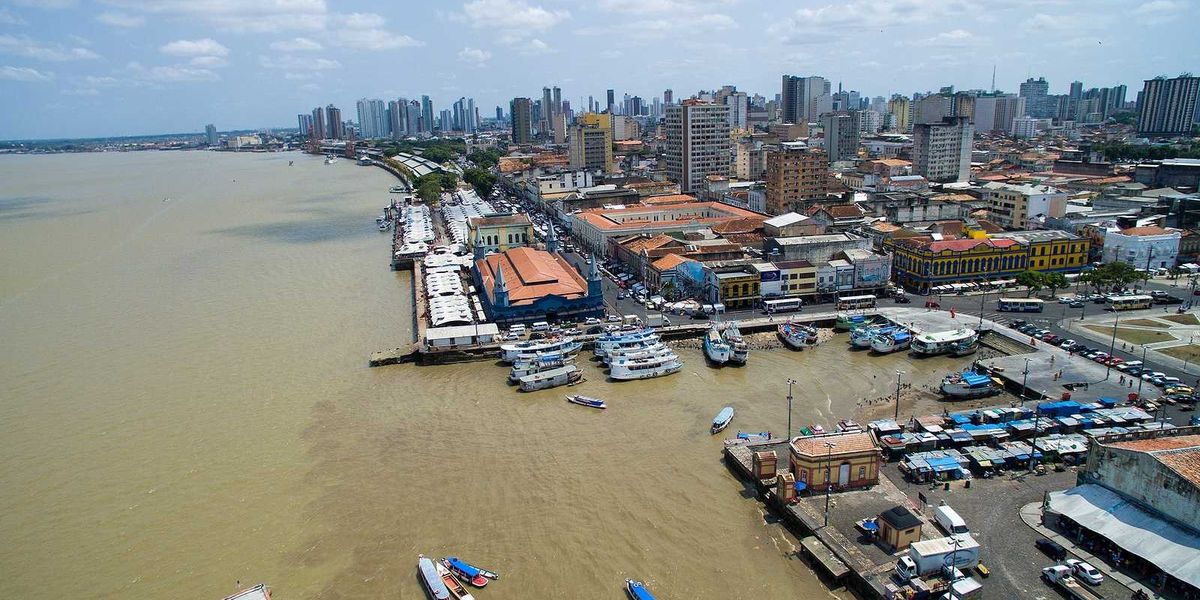stormwater
The Army Corps and NYC criticized for ignoring local voices in climate resilience efforts
New York City’s environmental justice activists are frustrated by the lack of input in climate resilience projects, saying the Army Corps often focuses too much on protecting real estate and storm surge rather than broader flood risks.
In short:
- Activists say the Army Corps overlooks the specific needs of vulnerable communities when designing flood protection plans.
- Local groups argue that wealthier areas receive more attention and funding, while low-income neighborhoods are ignored.
- Some communities have developed their own climate resilience strategies, though implementation remains a challenge.
Key quote:
“Wealthy communities, when worse comes to worse, they can get themselves out of this problem on their own—they have the money to protect themselves.”
— Victoria Sanders, climate and health manager, New York City Environmental Justice Alliance
Why this matters:
Local voices are vital for creating effective, fair climate resilience plans. Without incorporating community input, flood protection efforts risk deepening existing inequalities.
Read more: Opinion: Finding climate solutions in communities instead of labs
Los Angeles adapts to heavy storms by becoming a 'sponge city'
A supercharged February storm brought record rainfall to Los Angeles, testing and validating new infrastructure designed to absorb water and prevent catastrophic flooding.
In short:
- Los Angeles received up to 10 inches of rain in one day, overwhelming typical city infrastructure.
- The city captured over 8 billion gallons of stormwater, thanks to retrofitting efforts aimed at making the landscape more absorbent.
- These measures help reduce flood risks and keep pollutants out of the ocean by absorbing water into the ground.
Why this matters:
As climate change intensifies storms, cities must adapt by integrating green infrastructure to manage water more effectively and mitigate flood risks.
Read more:
Innovative concrete mix combats urban floods using seashell waste
A new type of permeable concrete made from discarded shellfish is helping to reduce flooding in Blackpool, England, by absorbing excess water in urban areas.
In short:
- The concrete, created by researchers at the University of Central Lancashire, uses crushed seashells to enhance water absorption and reduce stormwater runoff.
- It’s being tested in gardens and cycling paths, providing both flood protection and a sustainable use for shellfish waste.
- This approach addresses both climate-related flooding and the environmental impact of food and construction waste.
Key quote:
“They’re not so obvious at first… but as you walk on it, the shells become more apparent as you go, and little flecks of white start coming out.”
— Helen Jones, operations director at LeftCoast
Why this matters:
As climate change increases flood risks, innovative materials like shellfish concrete offer a sustainable solution that also reduces waste in construction and food industries.
Related EHN coverage:
Harnessing urban stormwater could revolutionize city water management
Cities in the United States have the untapped potential to capture a significant amount of stormwater, which could lead to more sustainable water resource management.
In short:
- Urban planning historically treated stormwater as a nuisance, leading to innovative infrastructure developments to manage it sustainably.
- The Pacific Institute reports that American cities generate 59.5 million acre-feet of stormwater annually, a significant potential water source.
- “Sponge city” methods and smarter infrastructure can aid in utilizing stormwater, mitigating climate change impacts on water resources.
Key quote:
"There really is no reason why stormwater capture shouldn't be up there on the list of water sources for all communities in the country that are looking to secure their long-term supplies."
— Bruk Berhanu, senior researcher at the Pacific Institute
Why this matters:
Effective stormwater management is pivotal for health outcomes, as it ensures a resilient water supply amidst intensifying droughts and floods due to climate change, and plays a crucial role in urban sustainability.
As of 2021, stormwater infrastructure in the U.S. has a grade of "D" from the American Society of Civil Engineers.
Los Angeles demonstrates the effectiveness of sponge city infrastructure
In the midst of unyielding downpours, Los Angeles' innovative "sponge" infrastructure successfully captured 8.6 billion gallons of water, providing enough resources to support more than 100,000 households for an entire year.
In short:
- LA's transformation into a sponge city includes permeable surfaces and spreading grounds to absorb stormwater.
- The city captured 8.6 billion gallons of water during a recent atmospheric river event, enough for over 100,000 households for a year.
- This approach is part of a broader strategy to manage water resources sustainably and mitigate urban flooding.
Key quote:
"The more trees, the more shade, the less heat island effect."
— Art Castro, manager of watershed management, Los Angeles Department of Water and Power.
Why this matters:
LA's success in managing extreme weather through sponge city infrastructure is a model for sustainable urban planning. It demonstrates how cities can adapt to climate change, reduce flooding, and efficiently utilize natural resources.
Capturing and reusing urban storm water could be a boon for water-stressed cities—if we can find a way to clean it up.









